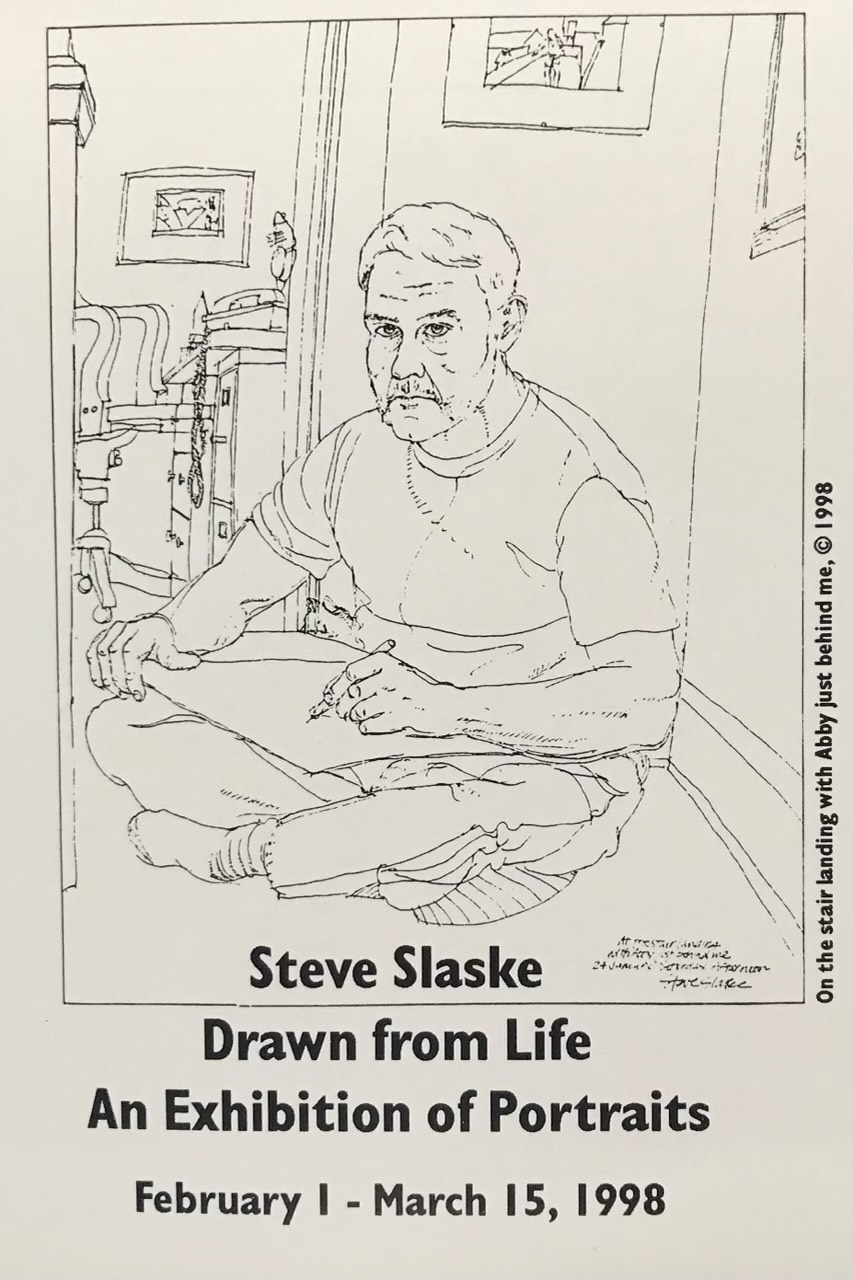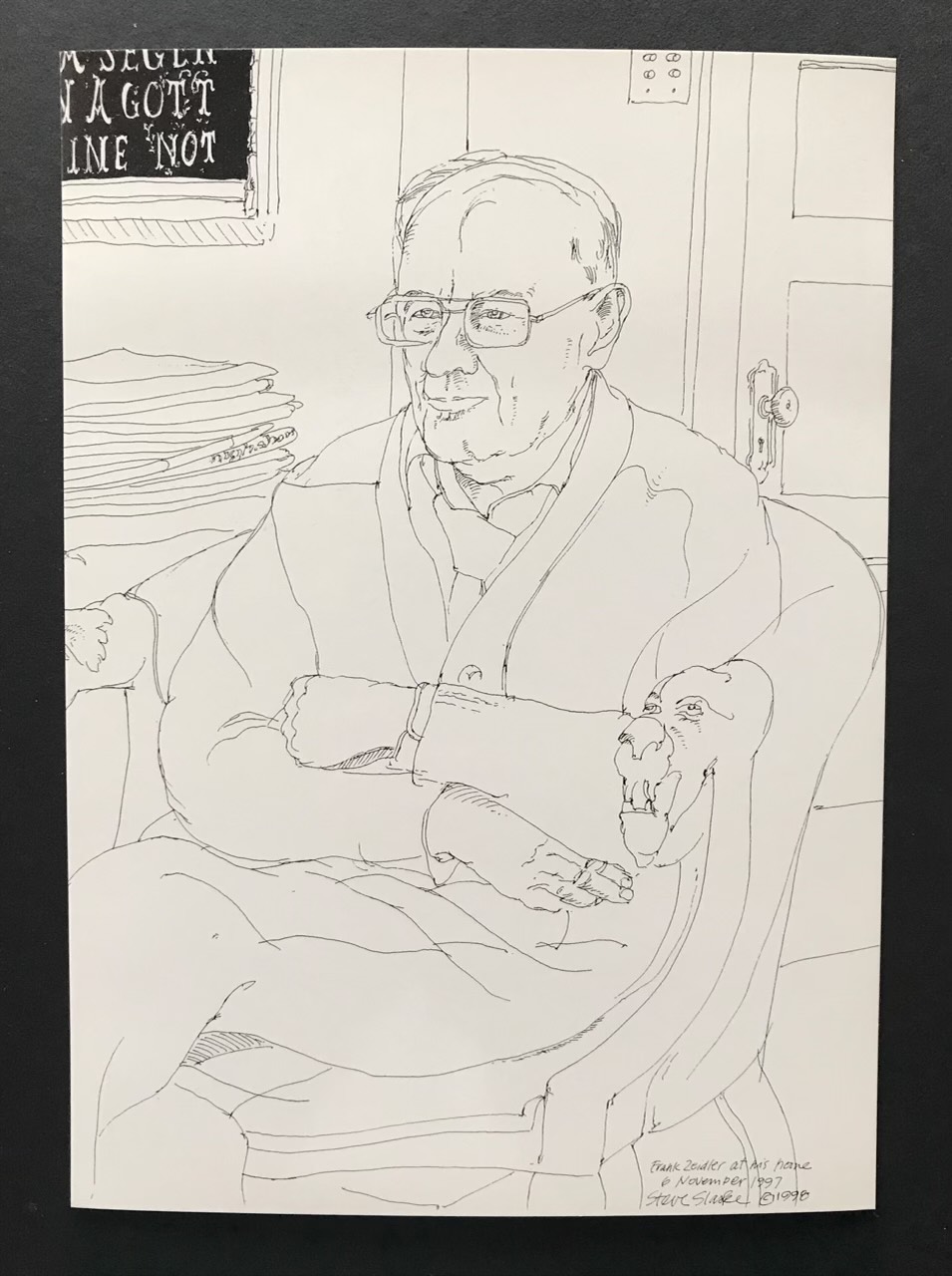Over a decade ago, Steve Slaske walked into the Chicago Cultural Center for a free orchestral concert.
While sitting in the audience at Preston Bradley Hall, he took out his sketchbook and spontaneously began to recreate the performance space. He drew the glass Tiffany dome ceiling, ornate murals and the wide arched columns of the Cultural Center as the musicians played. By the end of the concert, Slaske had a detailed pen drawing of the musicians and their surroundings.
That transformative concert 16 years ago would be the start of a series of 561 – and growing – concert live sketches filling multiple sketchbooks.
View this post on Instagram
After a drawing is complete, Slaske will often post his sketch on social media.
Today, Slaske is in the Cultural Center once again, but the energy is much different. He hasn’t been to a Cultural Center concert in over two years after they were shut down at the start of the COVID-19 pandemic.
Once it was safe to host concerts again, all performances scheduled to play in the elegant rooms of the Cultural Center were relocated three blocks away to the Seventeenth Church of Christ, Scientist.
Slaske still routinely goes to the relocated performances, but is waiting for the day that the Cultural Center sets up its stage for musicians again.
As he sits in Preston Bradley Hall — what some consider to be the “crown jewel” of the Chicago Cultural Center — Slaske flips through his sketchbook until he finds his most recent drawing. In the middle of an otherwise blank page are a violinist and pianist Slaske drew during a Seventeenth Church of Christ, Scientist concert. The musicians are in mid-song; the violinist has her bow raised and the pianist has his arms angled out in front of the keys.
Mimicking the times before the pandemic, he takes out his pen and begins to sketch the concert hall where the performers would have played.
Steve Slaske never expected to become an artist. In college, he pursued an architecture degree from the University of Wisconsin Milwaukee.
“It was really the drawing aspect of architecture that I liked the most,” Slaske explained with a knowing smile.
At the end of his sophomore year, Slaske needed a short break from school. He had an opportunity to live in Chicago, so he came down to the city to work.
What started as a summer factory job in the suburbs of Chicago led him to a job that would change his life. Slaske left his job at the factory and went to work in Evanston at Rotary International, becoming a staff illustrator for the global nonprofit’s magazine. He stayed there for a year, lettering and creating small illustrations. Slaske said that his time at Rotary International helped him realize that art could be a possibility for him.
“I think it was my experience in Chicago and getting this introductory-level job as an artist, like a staff artist, that gave me more confidence in my abilities,” he said. “Then when I went back and finished school, I was known as the guy who could draw really well.”
After graduating from the School of Architecture, Slaske started working in Milwaukee. He pursued a variety of art-related jobs, including graphic design, illustration and showing his work in art fairs and gallery shows.
Susan Modder met Slaske while she was the director of the Charles Allis Art Museum in Milwaukee. She assisted the museum curator with an exhibition of Slaske’s work entitled “Drawn from Life: An Exhibition of Portraits,” a moment in his career that he notes as some of his best work.
“His exhibit was really of everyday people, but also a lot of Milwaukee notables,” said Modder.

An advertisement for Slaske’s show titled “Drawn from Life: An Exhibition of Portraits.” The cover featured a self-portrait from the artist.

A portrait of Frank Zeidler drawn by Slaske. Zeidler served as the Mayor of Milwaukee from 1948-1960.
In the series of pen portraits, Slaske sat down and drew Frank Zeidler, a former mayor of Milwaukee, as well as successful restaurant owners and other Milwaukeeans. Each portrait in the exhibition was drawn live.
“I think that one of the noteworthy things about Steve’s work is his sketches just capture the essence of a person at a moment in time,” said Modder. “That’s what made these pen and ink drawings that were in the show very vibrant.”
Slaske says the same principle influences his concert drawings as well.
“To me, these drawings are like capturing a moment in time,” he said. “It’s live. I just give myself the time of the concert to do the drawing. The concert’s over, the drawing’s done.”
Since moving to Chicago in 2009, Slaske has sketched many concerts, including performances at the Chicago Cultural Center, the Chicago Symphony Center and the Holtschneider Performance Center at DePaul.
The last is where I met Steve. We were sitting next to each other in the balcony during the Emerson String Quartet concert. While the quartet performed Mendelssohn String Quartet No. 1 in E-flat Major, Op. 12, my eyes started to drift from the musicians on stage to the man on my left.
His eyes were going back and forth from the performers to the notebook and pen in his lap. When his head was bowed towards his notebook, it was clear he was carefully writing with his pen.
During the intermission, I asked him if he was a music critic reviewing the show. Steve turned his notebook towards me and revealed a detailed black-and-white sketch of the performance. The style reminded me of a courtroom sketch but instead of a courtroom, he captured concerts.
I wasn’t the only one who was fascinated by his drawing. DePaul student Austin Devine also noticed Slaske’s artistry during the performance.
“I was really confused at first to see him doing this during a concert, but when I was blown away that he worked so quickly and scaled everything so accurately,” said Devine.
Slaske says that he often works with the music to create the art, matching the speed of his linework to the speed of the music, picking up during fast sections and slowing down during elegant lulling songs.
While Slaske is not a musician himself – although he did play the organ when he was young – he feels a connection to orchestral music. His favorite composer is Sergey Rachmaninoff. Slaske enjoys the Romantic Period of classical music but enjoys the work of contemporary composers like Philip Glass and Arvo Pärt as well. When looking at a concert program, Slaske is drawn to strings (violins, violas and especially cellos), chamber music and string quartets.
Back in the empty Cultural Center, Slaske feels the absence of music as he draws.
“I noticed how different it was doing this drawing today in silence, just having done the musicians already,” said Slaske. “But then just drawing without music, it’s like a totally different thing.”
While he feels the difference, he is not sure whether it shows in the drawing.
Slaske’s pen lifts off of the page for the final time and the sketch is complete. The once empty sheet of paper is now filled with depictions of the same swirly mosaics and grand arch in front of us, hugging the two musicians in the center of the page.
“Should I sign it?” he asks, glancing up and then back down at his sketch.
He pens his name and with that, his 561st concert drawing is complete.
View this post on Instagram
Slaske’s final sketch from the Cultural Center. Slaske live-sketched musicians Grace Park and Tyler Wottrich and super-imposed them into Preston Bradley Hall.
Header illustration by Magda Wilhelm




NO COMMENT